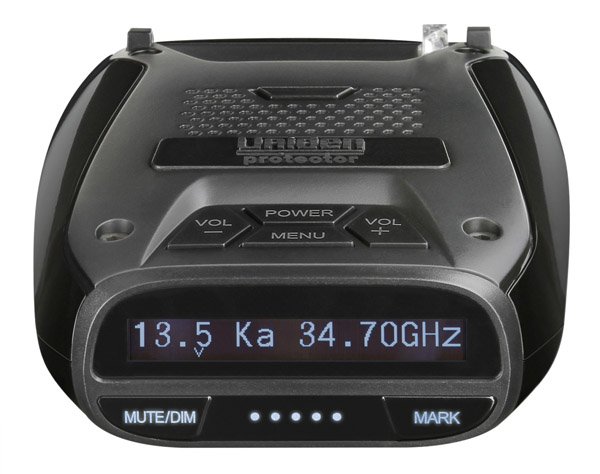 Update August 2020: The DFR7 is being discontinued and replaced by the DFR9. You can now buy it for just $169 (or less) and is a killer bang for the buck. If you’re looking for a good budget radar detector, I highly suggest you pick up a DFR7 while you still can. In this price range, you won’t find anything close to its performance or featureset.
Update August 2020: The DFR7 is being discontinued and replaced by the DFR9. You can now buy it for just $169 (or less) and is a killer bang for the buck. If you’re looking for a good budget radar detector, I highly suggest you pick up a DFR7 while you still can. In this price range, you won’t find anything close to its performance or featureset.
Original Review: At around $299 (available on Amazon or through BRD), the Uniden DFR7 is one of the best bang for the buck radar detectors you can get. Against the radar frequency used most around the US (Ka band, 34.7), it offers performance comparable to detectors that cost $100-200 more, it has some of the best blind spot filtering available at any price, plus it offers all the important GPS features you need to make this a well-rounded radar detector suitable for both highway and city driving. In this Uniden DFR7 review, we’ll go over what makes this detector such a great option for drivers as well as things you need to look out for.
At this point, whenever someone is looking for a good and relatively inexpensive radar detector for both highway and city driving, the DFR7 is the first one I point them towards. There’s times when another detector would be a better choice (no detector is right for everyone) and I’ll point out a few examples of when this may be the case, but as an inexpensive yet still good all-around detector, this is a top pick.
Additionally, for people who want a more basic and/or even less expensive detector, the GPS-less version of the DFR7, called the DFR6, is available for around $199 (available on Amazon or through BRD) and it’s the best radar detector under $200 that’d I’d recommend. It offers identical performance and BSM filtering capabilities, just without the extra benefits of GPS (which I explain a bit about below).
Both the DFR6 and DFR7 are top picks for radar detectors and I’m going to focus primarily on the DFR7, especially since much of this applies to the DFR6 as well, but let’s go ahead and take a closer look at both.
Features
- Long range radar detection
- Very effective filter against nearby vehicles with blind spot monitoring (BSM) systems
- Low speed muting (Quiet ride) to keep the detector quiet around town (DFR7 only)
- GPS lockouts to teach it where known false alerts are (DFR7 only)
- Red light camera (RLC) & speed camera alerts (DFR7 only)
- Detects X, K, and Ka bands, as well as Laser
- OLED display
- Stealthy all black case
- Voice alerts
- Updatable firmware (both detectors) and updateable RLC database (DFR7 only)
- Power cable has remote mute button, alert LED, and USB port to charge your phone
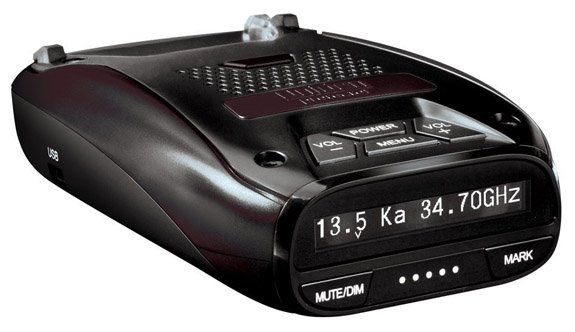
Performance
Long range warning is one of the main ways of gauging radar detector performance. The more warning time you can get, the better. Of course actually detection distances will vary from place to place. Flat straightaways allow for longer detection distances than curvy, hilly, tree-filled terrain. Not only that, but radar detectors perform better on some radar frequencies than others.
The DFR6 and DFR7 offer identical levels of long range detection and perform best on 34.7 (within Ka band) which is the most popular radar frequency in use in the US. Against 34.7 guns, they are pretty stellar performers, often able to nearly keep up with some high end long range detectors like the Escort Redline at times which is very impressive. They are even able to outperform other more expensive detectors like the V1 and Max360.
On the other Ka frequencies, however, like 33.8 and 35.5, they’re a bit lacking. It’s not bad, but their performance does fall below the competition in the $300+ price range. Personally, because 33.8 is what I see most often around where I live, I feel a little uncomfortable running the these detectors and it’s the main reason that I prefer running its higher performing brother, the Uniden R3, which is incredibly strong on every radar frequency and so I feel the extra money for the improved performance of R3 (not to mention the other improvements it offers too) is money well spent. (For more info about the DFR7 vs. R3, read this comparison article.) That said, the DFR7 should realistically be fine in most situations.
K band performance of the DFR7 is good, but not great. I really like that the BSM filter on the DFR7 allows you to filter out false alerts on K band without sacrificing range or reactivity the way other detectors that require TSR for BSM filtering do, so this one can have both good performance and good filtering in one package which I love.
False Alert Filtering
When it comes to false alerts, there’s several different types of false alerts and several different tools that the DFR7 has to filter them out.
When it comes to filtering out blind spot monitoring systems (BSM’s) from other nearby vehicles, enable the K Band Filter in the settings and it will do a great job at filtering them out. It’s actually one of the best BSM filters on the market which is surprising.
When it comes to stationary false alerts from speed signs on the side of the road or automatic door openers from shopping centers or drugstores, the GPS chip will help you filter those out. It can mute the detector when traveling at low speeds (Quiet Ride) and it can also learn where the false alerts are located and filter them out for you in the future. Simply press the Mute button on the front of the detector twice when the detector sees the false alert, and that will teach it to ignore this false in the future so after some initial work in the beginning to teach the detector, it will be nice and quiet around town for you. (Watch this video to learn how to use GPS lockouts.) Some other detectors like Escort products
If you drive mostly on the highway where the low speed muting won’t help you’re typically driving in new areas where you haven’t had a chance to teach the DFR7 where the falses are located, you can consider opting for the less expensive DFR6. It’s the same thing as the DFR7, except it doesn’t have the GPS chip, and it costs almost $100 less. You can buy the DFR6 here or here.
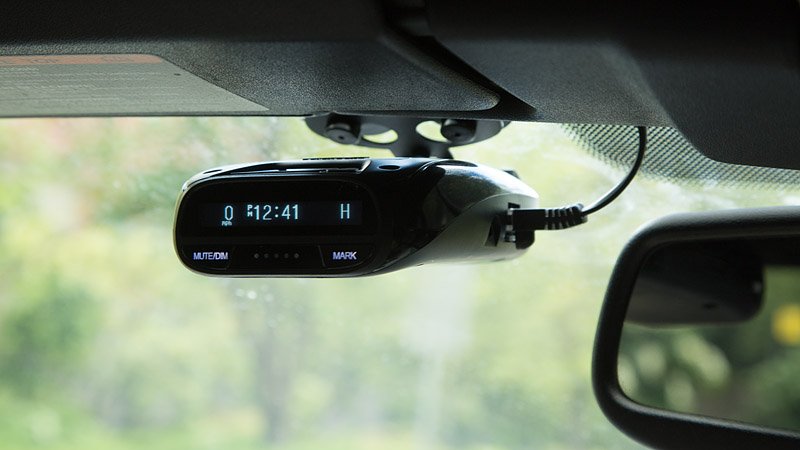
GPS Features
One of my favorite aspects about the DFR7 are its GPS capabilities. This is the key difference between the DFR6 and DFR7 and they’re so helpful that personally I don’t like running radar detectors anymore without GPS-based features. I’ve covered this all in detail in this article, but here’s a quick overview of the top 3 benefits:
- GPS lockouts: When you come across a stationary false alert that you pass regularly, perhaps an automatic door opener in front of a grocery store or drugstore, or a speed sign on the side of the road, you can tell the detector that this is a false alert, and it will learn and remember that. In the future when you come by again, the detector will automatically mute itself. However, if you come across a new signal such as a nearby police officer, it will alert you. This is a very useful feature. I do wish it could do this learning process automatically, but it’s restricted by patents. I also wish it could store more than 100 lockouts total, but there’s other filtering features available too.
- Low speed muting: This is really helpful for quieting false alerts around town too, and many people use this even more than lockouts. When you’re driving around at low speed, maybe in traffic or while stopped at a red light, your detector can automatically mute itself for you. You select a speed threshold and your detector is quiet below that. It’s very useful. Lockouts are nice for areas that you drive to regularly while low speed muting is good for both regular and new driving areas.
- Red light camera alerts: Finally your detector can alert you to nearby red light cameras and speed cameras. You can always run an app like Waze on your phone to get this functionality too, but it’s nice to have your detector doing it for you and have one less thing to run. The RLC database is updated by downloading an update from Uniden’s website, plugging the detector into your computer (Windows only), and running the update software. I wish the database was updated more frequently and that you could individually delete RLC alerts if you like, useful if you pass an RLC on a nearby surface street while you’re driving down the highway, for example, but you’d need to upgrade to the Uniden R3 for that.
DFR7 compared to…
There’s a bunch of other popular radar detectors in this price range (DFR7 retails for $299 but can be found for $269) and that offer similar features, so let’s take a look at a quick comparison.
Escort Passport Max (discontinued): ($349) This is what the DFR7’s direct competitor was, but the Max has since been discontinued. The Max had similar features, but it had some improvements like the GPS lockouts had an automatic learning process and the RLC database took into account direction of travel. However, the BSM filtering wasn’t as good and the DFR7 with its superior BSM filtering was generally the preferred option, especially since the Max typically sold for a hefty price premium when it was still available (it retailed for $549). A few places still have units and stock and the price now is quite a bit lower though. The Max was replaced by the Max2 which was the same and added some helpful bluetooth features, but at a retail price of $599 (though it could be found online for less), the DFR7 was a better value at roughly half the price.
Escort iX: ($499) The iX has similar issues as the Max/Max2. The iX has all the same features as the Max2, but reduced performance and worse filtering.. and it still costs quite a bit more than the DFR7. Unless you really want the autolockouts (which admittedly are handy) or you want bluetooth built in, IMHO the DFR7 is a better buy.
Radenso Pro: ($349) This is a very compact detector with very reasonable performance that typically gets overshadowed by its higher performance brother, the RPSE. The RP is a good detector too, but I think the superior BSM filtering and the fact that the lockouts work properly on the DFR7 (they’re still a bit problematic on the RP and RPSE) means that the DFR7 is the way to go.
Radenso XP: ($399) You can think of the XP as a DFR7 with even more control and customizability. I prefer the XP over the DFR7 for this reason and I love that I can make it even more quiet around town (though I’d have to pay more attention when doing this). As a simple and bang-for-the-buck comparison, I think the DFR7 is the better pick. (For more information, while this comes from Radenso, here’s a list of the advantages the XP offers over the DFR7.)
Uniden R3: ($399) I know you guys are gonna ask me about this and I’ve already done a comparison between the R3 and the DFR7. In short, the R3 has even better performance which I really like, the lockouts have been improved, you can delete RLC’s, it has a newer display, it adds some nice new features, etc. Personally I think it’s well worth the extra money, but if you’re going for an inexpensive detector, the DFR7 will certainly deliver.
Firmware Updates
The DFR7 offers downloadable firmware updates from Uniden’s website here. Uniden updated the detector several times back when it was called the LRD950. When they released it as the DFR7, they added more features still. As the DFR7, it’s now running firmware 1.0, but that’s really after several updates from the previous model.
The current model is stable and works well. I don’t anticipate more updates, but they could release some to add new features. Up to them. If they do, you’d simply download the update online, plug the detector into your computer (Windows only), and run the update software. You do the same thing to download the RLC/speedcam database as well.
Hardwire cable
The detector comes with a cig. lighter power cable with an alert LED, remote mute button, and USB port to charge your phone.
If you’d like to hardwire your detector to free up your cig. lighter port and not have a power cable hanging down your dash, purchase this hardwire cable. It’s simply a power cable, not anything fancy. Uniden is developing a hardwire cable that should add the alert LED and remote mute capability, but no ETA on that. If you want the normal hardwire cable, that’s available.
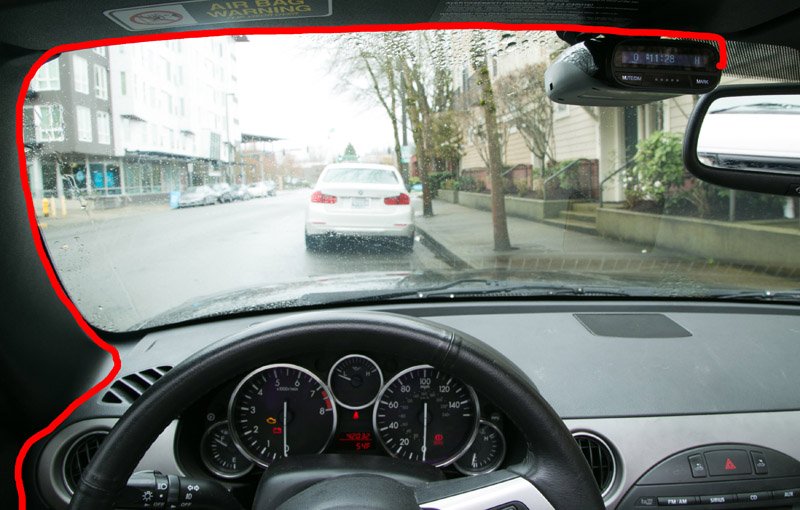
Click here for a tutorial on how to install a hardwire cable.
Configuration
Finally, once you purchase your DFR6 or DFR7, you can watch the following video to learn all about the detector’s features and settings and configure it the way you want.
Where to Buy
If you’re ready to purchase either of these detectors, and both of them are great choices, there’s two places I’d recommend.
Purchase the DFR7 from Amazon.
Purchase the DFR7 from BRD.
Purchase the DFR6 from Amazon.
Purchase the DFR6 from BRD.
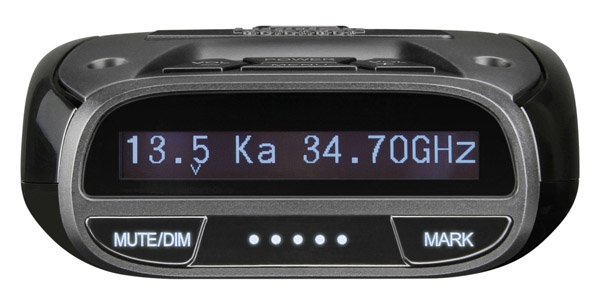
| This website contains affiliate links and I sometimes make commissions on purchases. All opinions are my own. I don’t do paid or sponsored reviews. Click here to read my affiliate disclosure. |







23 comments
Skip to comment form
Why aren’t there more radar detectors built as aftermarket rear-view mirrors?
Bigger surface area to detect with a patch antenna, or am I wrong? Maybe a little more thickness with a conventional horn-type antenna, but wouldn’t it still be doable?
Need help with firmware. Can’t get my DFR7 up to download the firmware . Do you have a video that will help me ? Please help !!!
Author
I haven’t done one for the DFR7. Basically you install the drivers, install the update software, plug in your detector, and hit the update button. http://support.uniden.com/radar-detectors/
I can get to #9, then it goes to ‘Acrobat DC’. It’s not even my default ! Uniden has the worst downloads……
DFR7 (Last Updated 08/17/2017 v1.10E) – added database update
Download and install USB driver (CP210xVCP) to your PC. [ZIP]
When you have downloaded the zip file, open up the folder & select one of the two Applications.
CP210xVCPInstaller_x64 for 64-bit Operating Systems. or CP210xVCPInstaller_x86 for 32-bit Operating Systems.
Download Update Manager programs. [ZIP].
After downloading, extract the files to a new folder.
Connect DFR7 to PC with a USB cable and run Firmware Update Manager (DFR7FWUpdateManager.exe). The current version of Firmware will appear on the application.
Browse and select the DFR7_RD_APP_SWv1.10e.bin file to update and start.
Run Database Update Manager (DFR7DBUpdateManagerv1.00.exe) . The current version of Database will appear on the application.
#9 — Browse and select the DB_20170814.bin file to update and start.
After update is complete, run “DFR VMUpdateManagerv1.00.exe”, press start, wait for completion.
Reset the device to the factory default settings by using the menu after new firmware has been installed.
Author
Acrobat DC has nothing to do with the firmware update. That’s a software program to read documents. If you’re trying to open the .bin file directly with Acrobat, that would be your issue. Open the update software and there’s a button in the update software to open the .bin file.
I’m not trying to open any kind of Acrobat, don’t even know what it does or why it shows up when I key something. I’ll try the bin file if I can find it.
Thanks..
Author
You’re more than likely trying to open the .bin file directly instead of doing it from within the update software program. Your computer may have associated .bin files with Acrobat reader so your computer is trying to open the file with Acrobat. If you open the firmware file with the update software, it should resolve the issue.
Can I just try it on another computer?
Author
If you want. If you need further tech support, contact Uniden or hop onto the forums. https://www.rdforum.org/index.php?forums/169/
I got 1.10 version working now . Thanks for the help.
Sorry I bothered you. I might look dumb, but I am stupid…….
Shiri
Author
Glad you got it sorted out. What was the trick?
I’m not sure, but when I copied some firmware and opened something up and put it in a BIN, something worked right !!!!
Wish I could remembered what I did…..
Would deleting ‘Acrobat DC’ get the #9 in the right place? Acrobat DC isn’t my default app being used.
Well, I’ll have to just not have any updates. Are these updates very important? Hopefully I’ll be ok.
Keep up the good work……
Shiri
where to find a usb cable to up date firmware for dfr7
Author
Here’s the USB cable you need
I’m thinking about buying this unit I know it’s a one or two year old 170.00 I live in Jackson Mississippi and are using just local around town sometime out of state I have been using a escort passport but I’m not happy with the way to the unit is been working I just purchased R1 last week at Best Buy for 199 love it r3 is 399 priceeee I guess what I’m saying there won’t be no more update to this unit I do see the difference between the r3,it look ? like just more lockout memory and MRCD i’m hoping this will not be a bad move on this buy
I bought the DFR7 using the promo code provided and I love it. The R3 was just way more detector than I needed for my little 15 mile commute. Too sensitive around cities. Like Vortex says, there’s no one perfect detector for everyone. I too am having a problem with the firmware update. It doesn’t seem to recognize it when I plug it in. Had no issue with the R3. Going to try a different cord after doing a master reset tomorrow.
Sad, VORTEX1 coupon code doesn’t work anymore for dfr7 for $129. 🙁
Author
Thanks for the heads up that it expired. I’ve updated this review accordingly. 🙂
I need a simple (cheap) radar detector for open road (almost all highway), what would be the best bang for the buck for my need you can recommend. I don’t mind false alarms nor do I need any fancy features (memory, learning etc.) that expensive detectors have. My main concern is long range on the highway that I regularly travel mostly and I would like to know if LEO is sitting on the usual speed traps before I get there. Thanks!
Author
Uniden R1 would be the easy choice. That’s exactly where it shines.
If that’s too expensive, the Uniden DFR8 would be the best cheap option. It looks like the DFR6 is no longer available. The DFR8 is its replacement, plus it’s on sale at the moment too which is a plus.
Just bought a Uniden DFR7..great product. One problem.when I get out or in the car,2018 Chevy Equinox,or open and close the hatch electronically the detector will reboot. It seems to be the impact of the slam that does it. Only happens a couple times a day but I need to know if anyone else has experienced this and should i send the detector back…thanks…..enjoy your videos very much…..